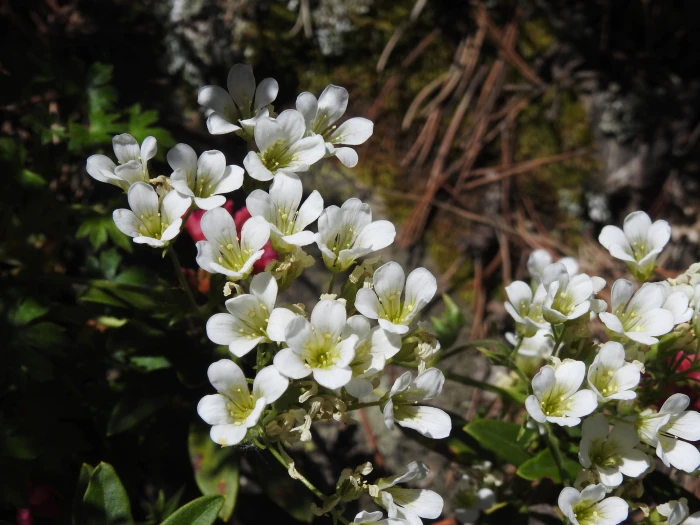Geranium-Leaved Saxifrage
(Saxifraga geranioides)
Geranium-Leaved Saxifrage (Saxifraga geranioides)
/
/

Yves Bas
CC BY 4.0
Image By:
Yves Bas
Recorded By:
Copyright:
CC BY 4.0
Copyright Notice:
Photo by: Yves Bas | License Type: CC BY 4.0 | License URL: http://creativecommons.org/licenses/by/4.0/ | Rights Holder: Yves Bas | Publisher: iNaturalist | Date Created: 2023-06-24T10:11:15-07:00 |

























Estimated Native Range
Climate Requirements for Virginia Beach, Virginia
| This Plant | Your Site | Plant Suitability for Your Location | ||
|---|---|---|---|---|
| • Precipitation | 24" - 66" | 46" | Aquatic | Aquatic |
| • High Temp. | 60°F - 85°F | 87°F | Your summers may be too hot for this plant. | Too hot |
| • Low Temp. | 11°F - 41°F | 32°F | Your winter temperatures are normal for this plant | Excellent |
This plant should grow well at your location with about N inches per year (Y minutes per month) of irrigation.
Summary
Saxifraga geranioides, commonly known as Geranium-leaved Saxifrage, is an evergreen perennial herb that is native to the mountainous regions of Europe, including the Alps and the Pyrenees. It is often found in rocky slopes, alpine meadows, and deciduous woodlands, where it thrives in the crevices of rocks and on shaded forest floors. This plant typically grows to a height and width of 0.5-1 feet (0.15-0.3 meters), forming low, dense mats of foliage. The leaves resemble those of some geranium species, hence the common name. It produces delicate white flowers in the spring, which are held above the foliage on slender stems and are moderately showy.
Geranium-leaved Saxifrage is valued for its attractive foliage and springtime blooms, making it a popular choice for rock gardens, alpine collections, and as ground cover in shaded areas. It is also used to add texture and interest to border fronts and woodland gardens. This saxifrage prefers consistently moist, well-drained soils and can tolerate a range of soil types, including clay, loam, and sandy soils. While it does best in full sun to part shade, it requires protection from intense afternoon sun in hotter climates. It is generally low maintenance, but gardeners should watch for slug and snail damage, which can be a potential problem.CC BY-SA 4.0
Geranium-leaved Saxifrage is valued for its attractive foliage and springtime blooms, making it a popular choice for rock gardens, alpine collections, and as ground cover in shaded areas. It is also used to add texture and interest to border fronts and woodland gardens. This saxifrage prefers consistently moist, well-drained soils and can tolerate a range of soil types, including clay, loam, and sandy soils. While it does best in full sun to part shade, it requires protection from intense afternoon sun in hotter climates. It is generally low maintenance, but gardeners should watch for slug and snail damage, which can be a potential problem.CC BY-SA 4.0
Plant Description
- Plant Type: Herb
- Height: 0.5-1 feet
- Width: 0.5-1 feet
- Growth Rate: Moderate
- Flower Color: White
- Flowering Season: Spring
- Leaf Retention: Evergreen
Growth Requirements
- Sun: Full Sun, Part Shade
- Water: Medium
- Drainage: Medium
Common Uses
Border Plant, Low Maintenance, Rock Garden
Natural Habitat
Mountainous regions of Europe, including the Alps and the Pyrenees, rocky slopes, alpine meadows, and deciduous woodlands
Other Names
Common Names: Crane’s Bill Saxifrage, Geranium-leaved Saxifrage
Scientific Names: Saxifraga geranioides, Evaiezoa geranioides, Evaiezoa ladanifera, Evaiezoa palmata, Saxifraga candollei, Saxifraga decandollei, Saxifraga geranioides f. candollii, Saxifraga geranioides f. dissecta, Saxifraga geranioides f. edentula
GBIF Accepted Name: Saxifraga geranioides